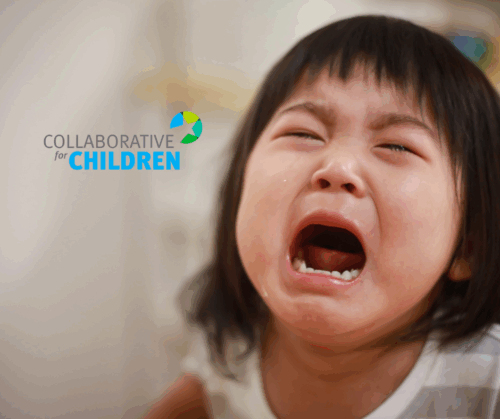Tantrums are often seen as disruptive or embarrassing, especially in public. But what if we told you that tantrums are actually a sign of healthy development? At Collaborative for Children, we help parents and child care professionals understand that tantrums are not just normal, they’re necessary. These emotional outbursts are a child’s way of learning to navigate feelings, boundaries, and communication.
According to experts at ZERO TO THREE, tantrums offer children a chance to learn about rules, limits, and self-regulation. They’re not a failure in parenting—they’re a developmental milestone.

Collaborative for Children breaks tantrums down into three stages: the build-up, the explosion, and the recovery.
– Build-Up: This is when a child starts to feel overwhelmed. You might notice whining or fussiness. Recognizing this stage early can help prevent a full-blown meltdown.
– Explosion: Emotions boil over. Children may scream, cry, or lash out. Staying calm and present is key.
– Recovery: The child begins to calm down. This is a critical moment to offer comfort and help them understand their emotions.
Children between ages 1 and 3 are developing rapidly. They’re learning to express preferences, assert independence, and communicate, often without the words to do so. Tantrums are their way of saying, “I need help managing this big feeling.”
Collaborative for Children encourages positive discipline strategies that validate a child’s emotions while setting clear boundaries. For example, saying “I see you’re upset because you can’t have that toy right now” helps children feel heard and teaches emotional vocabulary.
We offer certified early childhood education (ECE) training, STEAM-based curriculum, and resources for child care centers of excellence. Our parenting tips and child development resources are designed to empower families and educators to turn everyday challenges, like tantrums, into learning opportunities.
– Stay Calm: Your child needs you to be their emotional anchor.
– Validate Feelings: Acknowledge their emotions without giving in to unreasonable demands.
– Offer Choices: Empower children with age-appropriate decisions to reduce frustration.
– Create a Cozy Corner: A safe space for children to calm down and self-regulate.
– Model Coping Skills: Show children how to express anger in healthy ways—like stomping feet or squeezing a stress ball.
Yes, tantrums are a normal part of early childhood development. They help children learn emotional regulation and communication skills.
Stay calm, validate your child’s feelings, and ignore judgment from others. Your child needs your support, not your embarrassment.
While not all tantrums can be avoided, offering choices, maintaining routines, and recognizing early signs of frustration can reduce their frequency.
Find High-Quality Child care Centers Near You